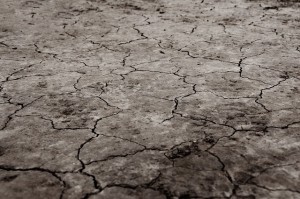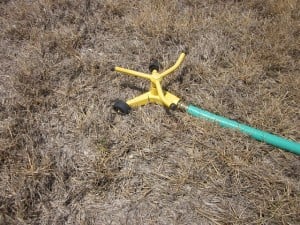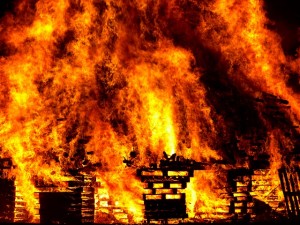 One of the most troublesome environmental issues is water shortage. As the population increases, industries develop, and weather patterns change, the issues of water shortage become more prevalent. The agricultural industry requires a tremendous amount of water to operate and it is in the top industries for water consumption. Everyone knows that crops require soil, sun, and water. In some cases of hydroponics soil in not even utilized, it is solely reliant on water. Since an industry is hinged upon the variable of the existence of water, the insurance industry has developed a form of protection for those in the agriculture industry – agricultural insurance.
One of the most troublesome environmental issues is water shortage. As the population increases, industries develop, and weather patterns change, the issues of water shortage become more prevalent. The agricultural industry requires a tremendous amount of water to operate and it is in the top industries for water consumption. Everyone knows that crops require soil, sun, and water. In some cases of hydroponics soil in not even utilized, it is solely reliant on water. Since an industry is hinged upon the variable of the existence of water, the insurance industry has developed a form of protection for those in the agriculture industry – agricultural insurance.
Crops are the predominate victim in a water shortage and depending on the crop will determine the sensitive to water issues. Farmers should immediately discuss the specifics of crop insurance to account for potential water shortage issues. Typically, the farmer must select the percentage of the crops covered and at a specific price point. A common range can vary from 50% – 85% of a crop. In order to meet necessary criteria for each crop, there are guidelines specific to time of year, type of crop, and deadlines to applying to obtaining coverage. This is a simple process, but because there are many intricacies it is always advisable to connect with and insurance expert to help navigate individual needs.
The reason for the many variations and deadline surrounding crops is directly connected to the federal laws and regulations that spearheaded the industry to protect farmers and food protection in the United States. Some of the information that is weighed when obtaining the right coverage for water shortage risk are things like the type of harvest, production history, yield, and environmental history. These factors are important in determining type of policy and when reporting of water shortage damage. A specific accounting and log of crop damage is vital to maintaining in line with an agricultural policy, due to the already sensitive nature of crops.
Don’t make the mistake at going at this alone. Contact one of our agents today.
Content provided by Transformer Marketing.
Read more
 The California drought has gotten out of control. That is why a private company stepped up and paid $1 billion for a new desalination plant located in Carlsbad.
The California drought has gotten out of control. That is why a private company stepped up and paid $1 billion for a new desalination plant located in Carlsbad.
The drought has really impacted Southern California within this last year, however, the drought has been drying up some parts of California for years.
What is desalination?
Basically, it’s a sifting process which removes salt and other minerals from salt water that is retrieved from the sea. This process will make the water safe for drinking and irrigation. Desalination is a more expensive process to provide potable water.
Alternatives
There are alternative methods to providing drinking water which are less expensive than desalination. The methods include ground water, which is obtaining drinking water from natural resources including rivers, lakes, and even digging underground for water.
Another method is water recycling. In Orange County, California, water recycling is underway. Since 2008, Orange County has provided residents with billions of gallons of potable water from the recycling facility. By 2015, Orange County will be providing an additional 30 million gallons per day, all thanks to their expansion efforts.
The drought in California has gotten so bad that even wells in Bakersfield, have run dry.
Content provided by Transformer Marketing.
Sources: http://en.wikipedia.org/wiki/Desalination and http://www.slate.com/articles/technology/future_tense/2014/06/desalination_vs_purification_why_californians_will_soon_drink_their_own.html
Read more
 Jose Pineda Rivas could use the cash. He’s got rent to pay, and his tooth hurts so badly he needs to see a dentist.
Jose Pineda Rivas could use the cash. He’s got rent to pay, and his tooth hurts so badly he needs to see a dentist.
But these days, money for fieldworkers like Rivas in this drought-parched stretch of California is about as scarce as rain. And the situation is likely to get worse before it gets better.
The 61-year-old farmhand, who lives in a small home with his wife and a friend’s family, is hardly making enough to cover basic expenses, let alone pricey dental work. He thinks he can afford to get his aching tooth removed, he said. But actually replace it?
Not a chance.
As he tipped back his straw hat and morosely gazed at his flip phone on a recent day, Rivas explained that the crew boss at a nearby tomato farm was supposed to contact him about returning to work. But the call hadn’t come.
It’s the same desperate story all over the Central Valley.
Like many fieldworkers in Mendota, a rural community 35 miles west of Fresno dubbed the Cantaloupe Center of the World, Rivas finds his seasonal job of more than two decades at risk of disappearing because of the statewide drought.
Drought leaves field barren
Fields that normally come to life by April with the planting of tomatoes and melons have been left barren due to insufficient water. And that means less farm work to go around.
“Usually this time of year, we’ll all be going out and weeding and laying irrigation line,” Rivas said in Spanish. “None of that work has happened, and who knows when it will?”
A near-record dry winter has put California in the grip of its worst drought in decades. While many parts of the state have yet to feel any real impact – no cutbacks, no stiff rationing – that’s not the case in the farm towns of the San Joaquin Valley, where water is the touchstone of the economy and underpins the region’s standing as the most agriculturally productive in the nation.
About 20,000 farm jobs statewide stand to be lost this year out of 400,000, the bulk of them in the valley, said Jeffrey Michael, director of the Business Forecasting Center at the University of the Pacific in Stockton.
The estimate does not include thousands of additional jobs supporting agriculture: the truck drivers, packers and processors, as well as the merchants, real estate agents and teachers serving these farm communities.
“We know that this year unemployment is going to be significantly worse than it’s been in a long time,” said Michael, whose job loss projections are based on the amount of farmland likely to be fallowed.
The lost work, he added, will only compound hardship that bedevils many valley towns where unemployment rates consistently rank among the highest in the state.
In Mendota, where about half of the 11,000 residents are in families living below the federal poverty line, the jobless rate stood at 37 percent as of the last count in March, according to state data.
The mayor of Mendota suggested that unemployment could hit 50 percent by summer as the effects of the drought fully play out – a level higher than what was seen during the recent recession.
Read the entire article here.
Content provided by http://www.sfgate.com/news/article/California-drought-Jobs-money-dry-up-in-farm-5431129.php
Read more
 Farmers in California, where Gov. Jerry Brown declared a state of emergency last month, are facing hard choices as a drought threatens to ruin their crops. They must weigh the costs of paying for irrigation against the chance that their fields will never get enough water this season.
Farmers in California, where Gov. Jerry Brown declared a state of emergency last month, are facing hard choices as a drought threatens to ruin their crops. They must weigh the costs of paying for irrigation against the chance that their fields will never get enough water this season.
A striking picture illustrates the severity of the situation, as Northern California’s Folsom Lake, a reservoir northeast of Sacramento, is seen in January at only 17 percent of its capacity. In July 2011, “the lake was at 97 percent of total capacity and 130 percent of its historical average for that date,” according to NASA.
The federal agency says it is working with the California Department of Water Resources to help the state manage its water resources. Last month, NASA released other images showing the drought’s severity. As NPR member station KQED reported, the state’s snowpack is shown in January 2013 and last month. Much of it did not return.
Here are other updates on the situation:
NASA said today that it’s working to share satellite and weather data with California farmers and water officials to help them avoid wasting water, and to use it in the most efficient way possible. The space agency says a trial run of its Satellite Irrigation Management Support system in 2012 and 2013 “demonstrated sustained yields while reducing the amount of water used by up to 33 percent relative to standard practice.”
Growers of almonds — a state crop valued at $5 billion in 2012 — have been pulling trees out of the ground while they’re still in their prime, in desperate actions driven by high water costs. The AP spoke to a grower who watched crews rip 20 percent of his orchard out of the ground. A man who does that work for a living says business is up 75 percent because of the drought, and his crews are working from sunup to sundown.
Forecasts of rain and snow were welcomed by many Californians, as parts of the state could see more rain this week than they’ve had in the previous eight months together. But Time’s Bryan Walsh warns that even with that rainfall, “much of California will still be below average for precipitation this month. Since February tends to be the wettest month for California, that means that the state still has a larger and larger rainfall deficit to make up if this drought is to ever end.”
Contact Scurich Insurance Services today to get a review of your agriculture insurance.
Content provided by http://www.npr.org/blogs/thetwo-way/2014/02/25/282624536/california-s-drought-a-shocking-photo-and-other-updates
Read more
 California’s worst drought in decades is feeding what may become a devastating wildfire season, one that is starting about five months early.
California’s worst drought in decades is feeding what may become a devastating wildfire season, one that is starting about five months early.
Extremely dry conditions have sparked 487 wildfires so far in 2014, compared with only 2 for the same period a year ago, according to the state Forestry and Fire Protection Department, known as Cal Fire. Potential power failures, home losses, lost tourism dollars and crop damage could jeopardize the world’s 10th largest economy as California struggles to emerge from the deepest recession since the 1930s.
“Having this occur statewide is unprecedented, certainly in my career,” Cal Fire Director Ken Pimlott, who started out as a firefighter almost 30 years ago, said in a telephone interview last week. “We anticipate the potential for a very long and sustained fire season throughout the rest of the year.”
For a state already reeling from a drought that officials say could be one of the worst in California’s history, fires would only add to the misery. They could damage critical power lines and cause blackouts, disrupt water supplies and destroy sensitive ecosystems, said Bill Stewart, a forestry specialist at the University of California at Berkeley.
Last year, prolonged dry conditions led to the third- largest fire in California’s history. The “Rim Fire” shut power lines and hydroelectric generators, charred parts of Yosemite National Park and threatened the Hetch Hetchy Reservoir watershed, which supplies 85 percent of the drinking water to San Francisco.
‘Poster Child’
The Rim Fire has become the “poster child” for future wildfires in California and the U.S. West, according to a 2013 report from CoreLogic Inc., a real estate data and analytics firm. Homes valued at about $78 billion in total are at risk from wildfires, estimates CoreLogic.
Fires could even pose a risk for the state’s $22 billion wine industry. In 2008, smoke from smoldering wildfires in Mendocino County contaminated crops of pinot noir grapes, said Bill Pauli, a grower and general partner of Yokayo Wine Company in Ukiah, California.
“Some wines had the odor of someone who had been standing next to a barbecue,” Pauli said in a telephone interview. “It was not a good situation and we all hope it doesn’t happen again.”
Extra Firefighters
Fire season usually begins around May and typically ends in November with the onset of winter storms, according to Cal Fire. This year, the department says it has hired 125 additional firefighters, staffed 25 extra fire engines and retained crews and aircraft that would normally be idle this time of year. The state has banned campfires and smoking in several parks.
“Right now, all of our planning is for the worst-case scenario,” said Pimlott of Cal Fire. “We want to make sure we are ready.”
The wildfire danger is of more concern to Los Angeles Mayor Eric Garcetti than the prospect of running out of water because of the drought, he said during an interview at Bloomberg News’s Los Angeles office.
“I think we are going to see fire season around the clock for much of the year,” Garcetti said. “We are going to have to keep deployments much higher.”
The city expects to spend an extra $12 million this year on fire department coverage due to the dry conditions, Garcetti said.
Transmission Lines
At the same time, utilities including PG&E Corp. and Sempra Energy’s San Diego Gas & Electric are implementing plans normally reserved for high-fire season, such as stepping up patrols of electrical lines and bringing fire crews along for routine repairs.
“Wildfires are always a risk in California,” said Alvin Thoma, director of power generation at San Francisco-based PG&E. “With the dry conditions we’ve had, the soil moisture content right now is much lower than usual, so that makes wildfires much more of a concern.”
The California ISO, the state grid operator, said it will keep an “eagle eye” on high-voltage transmission lines, which will be needed to import more power this summer to make up for dwindling hydro-electric supplies and the retirement of a 2,200- megawatt nuclear plant in Southern California. The state typically imports one-quarter of its power needs, according to the ISO.
“The wild card is always fires,” said Stephanie McCorkle, a spokeswoman for California ISO. “They can affect the transmission and that literally cuts imports that we can’t afford to lose.”
Extra Vigilant
If lines go down, the grid operator can reroute electricity and ramp up local generation production, McCorkle said.
Edison International’s Southern California Edison utility, owner of the San Onofre nuclear plant that was retired last year, will need to be extra vigilant if the dry conditions continue, said Chairman and Chief Executive Officer Ted Craver.
“You can’t say there wouldn’t be some combination of events, a heat storm and a fire that takes out a transmission line,” Craver said in a telephone interview.
Upgrades to power networks and new gas generation that has come online in the past two years will help “the grid to be able to withstand the shocks,” Craver said.
Although rainstorms in the past week have provided some respite, the odds are that the drought will persist along with the risk of more wildfires, according to Cal Fire.
“Everybody is probably sitting back on pins and needles,” said Thomas Jeffery, a senior hazard scientist at CoreLogic. “The potential for a really disastrous wildfire season is very high.”
Content provided by http://www.claimsjournal.com/news/west/2014/02/11/244295.htm
Read more
 Last week Governor Jerry Brown declared California is in a drought. A drought simply stated is a shortage of precipitation, whether it comes from rain or snow. There just simply isn’t any moisture in our lands. Problems that can stem from a drought can become catastrophic. Withered crops, high fire dangers, water shortages and livestock dying are just a few of the effects that a drought has on our land. Unemployment is another effect that a drought will bring. The loss of crops means no employment. In 2009, about 10,000 people lost their job due to the drought.
Last week Governor Jerry Brown declared California is in a drought. A drought simply stated is a shortage of precipitation, whether it comes from rain or snow. There just simply isn’t any moisture in our lands. Problems that can stem from a drought can become catastrophic. Withered crops, high fire dangers, water shortages and livestock dying are just a few of the effects that a drought has on our land. Unemployment is another effect that a drought will bring. The loss of crops means no employment. In 2009, about 10,000 people lost their job due to the drought.
According to Brown, who was in San Francisco last week, “The drought accentuates and further displays the conflicts between north and south and between urban and rural parts of the state. So, as governor, I’ll be doing my part to bring people together and working through this.”
During this dry season, the rest of us need to be diligent as well. Conserve as much water as we can, including washing dishes all at once, don’t light fires when you’re camping and use only propane stoves. Right now, California is in danger of becoming a matchbox just waiting for the match to strike.
According to 58 year old Kevin Kester, “I am a fifth-generation cattle rancher, and it has never been this bad ever in my lifetime — and from my family’s history, it’s never been anywhere close to this bad ever.” The last drought that was comparable to the one we’re in now, according to his family’s history was in the 1890’s.
Contact us today for a quote for your agribusiness.
Content provided by Transformer Marketing and http://www.register-pajaronian.com/v2_news_articles.php?heading=0&story_id=15820&page=72
Read more
 One of the most troublesome environmental issues is water shortage. As the population increases, industries develop, and weather patterns change, the issues of water shortage become more prevalent. The agricultural industry requires a tremendous amount of water to operate and it is in the top industries for water consumption. Everyone knows that crops require soil, sun, and water. In some cases of hydroponics soil in not even utilized, it is solely reliant on water. Since an industry is hinged upon the variable of the existence of water, the insurance industry has developed a form of protection for those in the agriculture industry – agricultural insurance.
One of the most troublesome environmental issues is water shortage. As the population increases, industries develop, and weather patterns change, the issues of water shortage become more prevalent. The agricultural industry requires a tremendous amount of water to operate and it is in the top industries for water consumption. Everyone knows that crops require soil, sun, and water. In some cases of hydroponics soil in not even utilized, it is solely reliant on water. Since an industry is hinged upon the variable of the existence of water, the insurance industry has developed a form of protection for those in the agriculture industry – agricultural insurance.
 The California drought has gotten out of control. That is why a private company stepped up and paid $1 billion for a new desalination plant located in Carlsbad.
The California drought has gotten out of control. That is why a private company stepped up and paid $1 billion for a new desalination plant located in Carlsbad.

